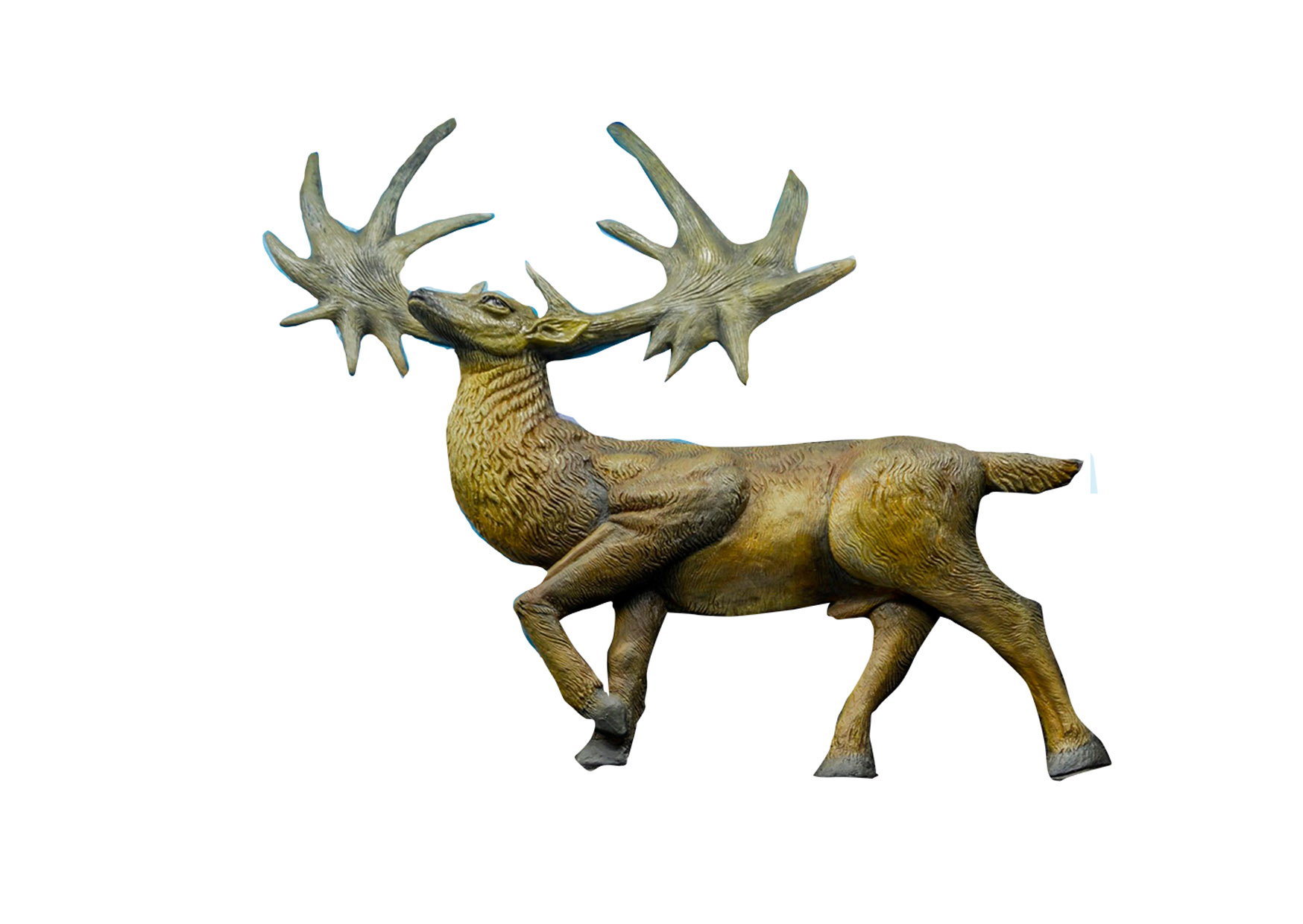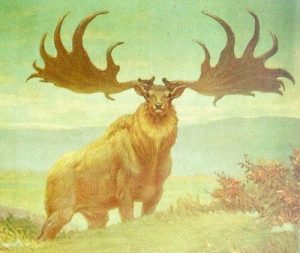
Irish elk
Megaloceros giganteus
- This deer is characterized by immense body size and had the largest ant
 lers of any form of deer known.
lers of any form of deer known. - Irish elk evolved during the glacial periods of the last million years, fossils are found commonly in Pleistocene deposits (2.6 million years ago and ended about 11,700 years ago) in Europe and Asia.
- Despite its distribution throughout Eurasia, the species was most abundant in Ireland.
- It ranged throughout Europe, northern Asia and northern Africa, and a related form is known from China.
- Size
- Shoulder height – 2.1 meters
- Antlers span – 4 m
- Antlers differed from those of the modern deer: the main part was a massive single sheet from which arose a series of pointed projections, or tines.
- Irish elk was a herding species.
- During breeding season, males competed directly for access to females. Females prefer males with larger antlers – both because they can fight better and because larger antlers imply a greater fitness.
Causes for extinction
- The Last Glacial Period – a time of low temperatures and fully-developed glaciers that extended from around 115,000 years ago to around 11,700 years ago. After that time, glaciers melted away and global temperatures slowly began to rise. This phenomenon changed the types of vegetation, as well as human population expansion their throughout Europe.
- Many scientists supposed that the Irish elk went extinct during the most recent ice age succumbed to starvation due to change in vegetation; however, fossils of M. giganteus uncovered in Siberia have been dated to approximately 7,000–8,000 years ago, a period characterized by warm temperatures.
- Its massive antlers are supposed to be maladaptation – such as that could have prohibited running. For instance, studies on the size of antlers over time, have shown that the average size of antlers was actually decreasingand animals with smaller antlers were actually more successful at surviving and reproducing.
- The antlers and bones from the species have been found in ancient human settlements suggests that humans were very familiar with the species and likely used it as a source of food.
